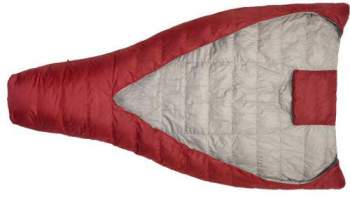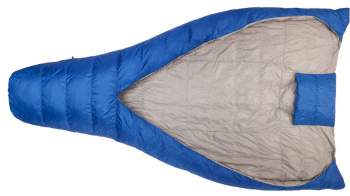In the descriptions and specifications of some sleeping bags and quilts, you can see the statement EN rated and also EN13537 or EN 13537. So what is all this, what is EN 13537 sleeping bag temperature rating?
EN Rated bags
The EN rating system has been introduced in EU in 2005, and it has been accepted also by some top US outdoor manufacturers and retailers, like Therm-a-Rest, Sierra Designs, REI, etc. It may help when you compare different sleeping bags. So the short answer is:
There is no legal obligation for brands to conform to this, and also, this does not apply to the military use and to sleeping bags for extreme temperatures (in practical terms for the temperatures below -25°C). Note also that this standard applies only to hooded sleeping bags.
How they set standards
The testing led to this standard includes sleeping in a cold chamber on a basic foam mat, and wearing a thin long base underwear layer. I am not sure about details regarding this layer.
In the terminology used in setting standards, you will see the “standard man” and this implies a person 25 years old, 1.73 m tall (5’ 6”) and weighing 73 kg (160 lb). Why these numbers is hard to guess, something tells me that there are differences in weight from country to country, and from continent to continent.
Similarly, a “standard woman” is 25 years old, 1.6 m tall (5’ 2”) and weighing 60 kg (132 lb).
What are the main parameters
These are the parameters expected to see if a bag or quilt is EN rated:
- Upper Limit.
- Comfort.
- Lower Limit.
- Extreme.
Now, these can be a bit confusing and here is why:
Upper Limit is the temperature at which a standard male can sleep without excessive perspiration with the hood and zippers open and with the arms outside of the bag.
Comfort is the temperature at which a standard woman can sleep comfortably. Women, in general, need more insulation and I have discussed this in my another text. So, if you are a man, you might as well consider this parameter if you need more insulation.
But it is fair to say that some claim that this is a myth, and that such a distinction does not really exist. Apparently, the ability to generate and retain warmth is a function of the mass and density, not the gender, so a man and woman of equal size and density would have virtually no difference in rates. Well, my answer is: you should ask my wife about it. She is always cold.
Lower Limit is for standard men. Similar to the cases above, this is the lowest temperature at which a standard male can sleep for eight hours in a curled position without waking up.
Extreme: Here, we are again at women. This is the minimum temperature at which a standard female can remain for six hours without risk of death from hypothermia. Note that frostbite is accepted as possible. This sounds really extreme to me.
Is this all reliable – personal feelings vs standards
I would say that sensitivity to temperature is a very personal thing and it is hard to apply standards to any specific person. A lot depends on things like health condition, nutritional situation (this also includes the level of alcohol in blood), exhaustion, habits, etc. Yet another thing is the wind exposure, air humidity, is it day or night, etc.
So, should we really use the EN standards? No doubt yes, even with many personal and other factors that cannot be included, these standards are useful.
By knowing how they made tests, we have rough guidelines, and we can always adapt ourself by adding extra layers if necessary or removing the mentioned long underwear if we feel too warm.
If you are in search of a sleeping bag, a quilt, or a backcountry bed, please visit my page with such tools. If you also need a pad, please check here.
Thank you for reading. I shall be happy to hear from you, so please use the comment box below in the case of questions and comments.


Leave a Reply